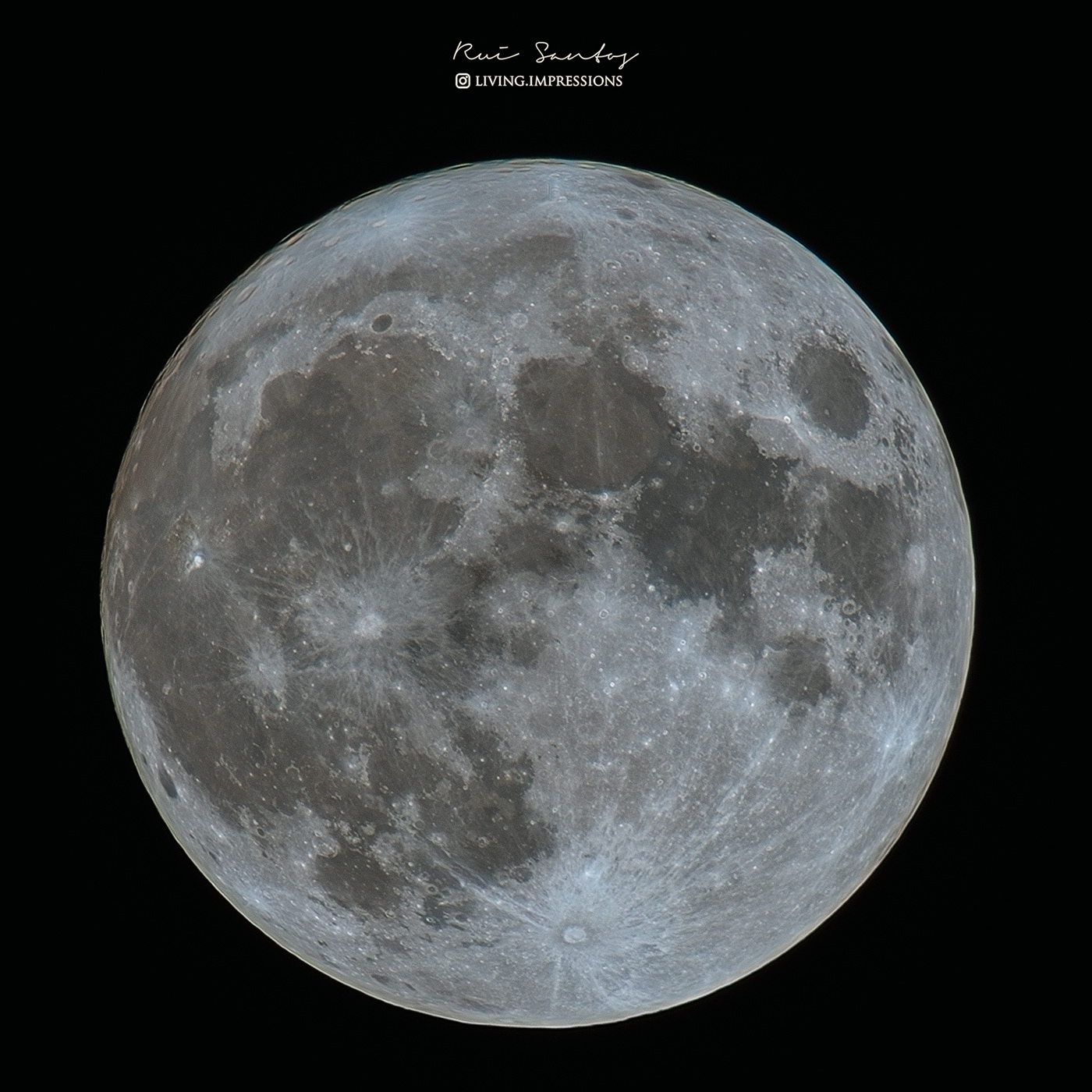Mineral Moon and its Geology Supermoon of Sturgeon 11-08-22
Good evening, today I bring you one of the projects I'm most proud of so far. All captured with a mirrorless camera, a telezoom lens and a teleconverter.
And given the occasion I leave you a little information for a better understanding of these 3 images that I show you today, they are fundamentally the same, but with a slightly different post-processing.
Let's start backwards:
(Image 3 – Pure, Stacking with light processing | Image 2 – Stacking with some processing: The colors that the eye can sometimes see)
The Moon is usually seen in subtle shades of gray or yellow.
The black spots are known by a term used in astronomy: the lunar seas.
These lunar seas are not oceans, although at first the astronomer who called them so confused them as such, but are vast plains composed of basalt, formed by ancient eruptions of incandescent material that followed the impact of asteroids and meteorites against the surface of the Moon, and they remain so, there is minimal erosion because there is no atmosphere.
(Image 1 – Mineral Moon - Stacking processed in order to extract all the emitted color)
The lunar surface results from a complex geomorphology that combines different processes, such as meteoritic impacts and volcanism.
The different colors are recognized as corresponding to actual differences in the chemical composition of the lunar surface.
Blue tones reveal areas rich in ilmenite, which contains iron, titanium and oxygen, mainly titanium, while orange and purple colors show regions relatively poor in titanium and iron. The white/grey tones refer to areas of greater exposure to sunlight.
Lunar incursions were once guided by similar images.
Hope you like it.
Thanks for checking it out and reading







